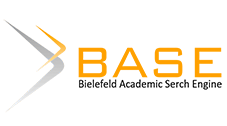Design and construction of a machine to determine friction wear on different materials in the maritime sector by applying torque
Investigation article
Keywords:
Friction, tribology, loadAbstract
Friction is created when two bodies come into contact with each other generating the friction force, an operating principle both in machine elements and in elements of daily life has tried to understand and model friction and the wear of materials The use of protective coatings and, in general, the behavior of surfaces in relation to their environment, has given way to tribology, which is the science that studies lubrication, friction and wear of moving or stationary parts. Lubrication, friction, and wear play a fundamental role in the life of machine elements. This project was implemented in the mechanical workshop of the Uleam engineering faculty as a didactic friction test bench with which experimental tribology practices can be carried out. The equipment implemented in the laboratory was chosen based on an analysis of the material science syllabus and resistance of materials from the Naval Mechanics Engineering Degree and an analysis based on the need to understand the behavior of certain materials committed to different charging regimes. The implemented equipment meets high design standards from which excellent results were obtained in the tests carried out prior to implementation in the laboratory. Laboratory practices comprise a very important part of the training of an engineer, the implementation of this equipment for the Faculty of Engineering of the Uleam will greatly benefit the students, who now have the opportunity to carry out practical experiments of behavior of materials, improving the understanding of certain phenomena in contact wear among the materials most used in the maritime sector.
Keywords: Friction, tribology, load.
Downloads
References
Diego, Á. C. (septiembre de 2015). Estudio quimiométrico de aceites y lubricantes marinos. Estudio quimiométrico de aceites y lubricantes marinos. España: Escuela Universitaria de Ingeniería Técnica Industrial de Bilbao.
Fajardo, O. Y. (2013). fenómenos de fricción en la nanoescala: estudio teórico y computacional. Zaguan: Repositorio de la Universidad de Zaragoza.
Krim, J. (1996). Friction at the atomic scale. Scientific American, 1-8.
Mo Y 1, T. K. (2009). Leyes de fricción a nanoescala. Biblioteca Nacional de Medicina de EE. UU. Institutos Nacionales de Salud, 1116 - 1119.
Urbakh, M. (2004). La naturaleza no lineal de la fricción. Biblioteca Nacional de los Estados Unidos Institutos Nacionales de Salud, 525–528.
Volker Bormuth, V. V. (2009). Límites de fricción de proteínas Movimientos difusivos y dirigidos de motores de kinesina en microtúbulos. Science, 870-873.
Published
How to Cite
Issue
Section
License
Copyright (c) 2018 Revista de Ciencias del Mar y Acuicultura YAKU

This work is licensed under a Creative Commons Attribution-NonCommercial-ShareAlike 4.0 International License.


1.jpg)













